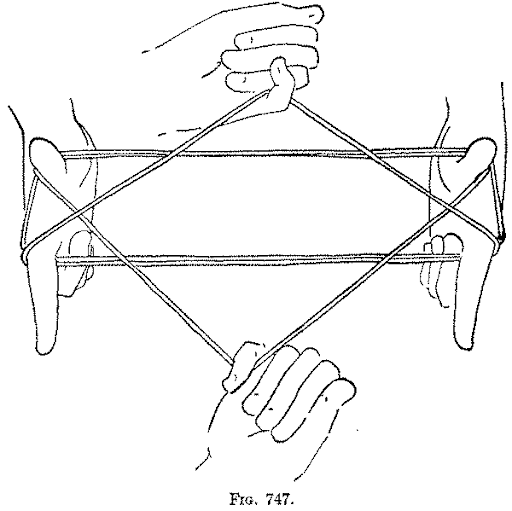This piece is great, I really enjoyed it! It made me feel kind of quietly hopeful. The passage "Every gathering is a set of private
tables, faces serving plates of sound or sense. One by one we listen and know, co-linear, adjacent, overlapping and not touching, sharing common time in the proximity of our bodies or their traces, and now or later, in the touch of understanding" reminded me a lot of Sara Ahmed's "Orientations: Toward a Queer Phenomenology," from the table metaphor to the spatial language you use. Your emphasis on processes of production as almost forgotten in favor of the thing itself at the end of the piece ("it was never global, only a string of beads calling itself a necklace and forgetting the needle and thread, how we’ve moved and nudged, rolled, and scuffed. How we were blown from glass or rolled from clay, or yes, machine-fabricated in polymers") made me think about trans studies, which is similarly invested in unpacking how bodies/genders/etc come to be produced rather than taking them at face value, which has become a mode of political thinking in some trans scholarship. For example, in Normal Life Dean Spade states resistance in critical trans politics "is about practice and process rather than a point of arrival, resisting hierarchies of truth and reality and instead naming and refusing state violence." Sorry I don't have more fleshed out thoughts, I wish I had more time to spend with this!
Donna Haraway's question comes to mind:
"How can science studies scholars take seriously the constitutively militarized practice of technoscience and not replicate in our own practice, including the material-semiotic flesh of our language, the worlds we analyze?"
And her provocation to think of relationality as a game of cat's cradle:
"Cat's cradle is about patterns and knots; the game takes great skill and can result in some serious surprises. One person can build up a large repertoire of string figures on a single pair of hands; but the cat's cradle figures can be passed back and forth on the hands of several players, who add new moves in the building of complex patterns. Cat's cradle invites a sense of collective work, of one person not being able to make all the patterns alone. One does not "win" at cat's cradle; the goal is more interesting and more open-ended than that. It is not always possible to repeat interesting patterns, and figuring out what happened to result in intriguing patterns is an embodied analytical skill. The game is played around the world and can have considerable cultural significance. Cat's cradle is both local and global, distributed and knotted together."
See: Haraway, Donna. ‘A Game of Cat’s Cradle: Science Studies, Feminist Theory, Cultural Studies’. Configurations 2, no. 1 (1994): 59–71. https://doi.org/10.1353/con.1994.0009.

Prompted by the use of "assemblages" in Poem #1, this called forth for me the rhizome/plateau metaphor from Deleuze & Guattari. Poem #2 uses this biological metaphor to great effect (affect?) by riffing on the word "leaf" (leaf > leave > long-life leaf) with alliteration to emphasize the theme. The reduction of words from Poem #1 to Poem #2 also mirrors the process by which, after resources are gathered together, the labour of the "gathering is concealed." There's a lot of work that goes into creating a ten-word poem yet the process is obscured by the concision of Poem #2.
Meredith Sattler's Sketch 6
Hello Meredith! I love your biosphere 2 diagrams, and tracing their "mis-readings" and how they come to function/do work beyond their original meaning would be super interesting. They reminded me too of something I've noticed in my scientist interlocutors' diagrams: all the arrows and flow-chart-like depictions. I started seeing so many flow charts (and more "metaphorical" ones as well, i.e. as visual slang as you say, for non-chemical reactions, non-chemical or non-energy flows, etc.) that I wanted to slow down and not just take this form of visual representation for granted. In my work, for example, there is a big focus on converting certain raw materials into renewable products, and I've been curious about what conversion versus breakdown versus separation/refining might mean--and how these ideas might be reflected in such things like the flow chart slang. But this is still very early in my thoughts about this! I would love to hear more about what you think the flows and arrows mean/do in your interlocutors' diagrams.
Alexandra Ciocanel and Caroline White-...,
I thought of two books, Data Flow 1 and Data Flow 2 as inspiration for covers that work with data. Also check out the website for Stefanie Posavec and also David McCandeless. Also, have a look at the data artwork at ZKM in Karlsruhe.
http://www.stefanieposavec.com/
https://www.amazon.co.uk/Data-Flow-Visualizing-Information-Graphic/dp/3899552784
Your first two images reminded me of how Donna Haraway used to use for her bookcovers the same artist. Take a look at the Cyborg Manifesto or OncoMouse bookcovers for the indigenous artist, Lynn Randolph.
Your second image reminded me of the illustrator Andrew Park. You may find these inspiring? https://en.wikipedia.org/wiki/Andrew_Park_(animator)
Sofie, having a single object on a bookcover can make a striking appearance. Have a look at the different versions of the SCUM Manifesto by Valerie Solanas. In one of the last editions they use a single image in an iconographic way.
Hannah, your image of the data thugger and Angela your images of people too, made me think of how you could portray the emotion of your research as an atmosphere, in a more abstract way. I was thinking about the bookcover on affect called the Hundreds by Lauren Berlant and Kathleen Stewart.
The cover is made by an artist who happens to be a pupeteer and animator, it's a still from an installation, Rather than depict the number "hundreds" the cover captures a mood or an atmosphere. See Here: https://books.google.co.uk/books/about/The_Hundreds.html?id=j22DDwAAQBAJ&printsec=frontcover&source=kp_read_button&redir_esc=y#v=onepage&q&f=false
Images can be used as bookcovers if cropped into. The cover by Jackie Orr, the Panic Diaries came to mind.